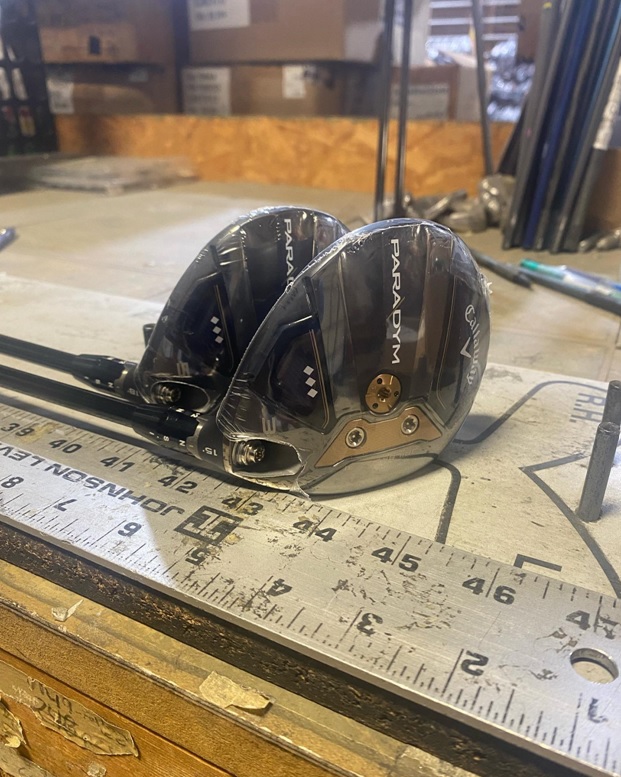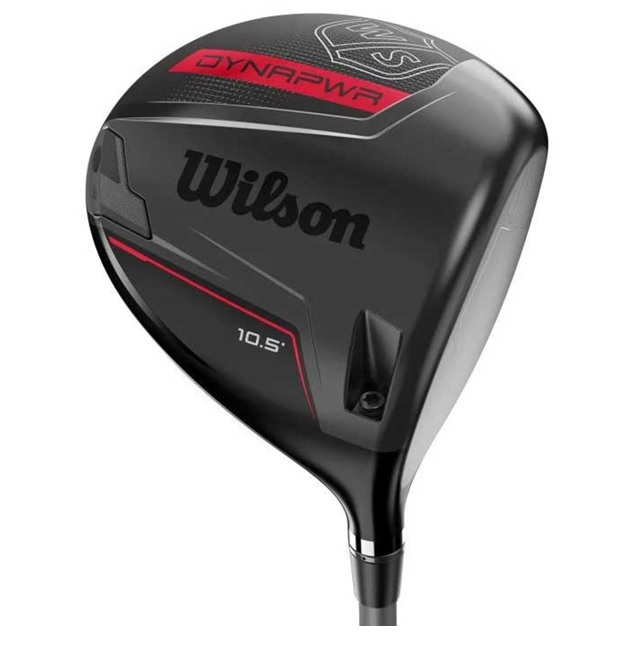Golf Club Head Materials: A Primer
Posted by Dallas Golf on 12 Jun 2024

Looking through advanced TaylorMade driver heads, PING golf driver shafts and Sun Mountain golf stand bags, it can be easy to get caught up in the hype and lose sight of the basics.
What materials are used to create golf equipment, and how does that impact performance?
This article will deal with one aspect of that, specifically. What materials are used in golf club head manufacturing, what are the relative advantages and disadvantages of each, and why are they used?
Let’s dig into it.
Wood
You’ve heard of a wood, right? Well, that’s because these clubs were actually made of wood, as recently as the 80s, when the “metal age” began in earnest, and manufacturers started using titanium in droves.
Back in the day, many clubs were made of select hardwoods, like persimmon and hickory, which are not only aesthetically beautiful, but which were hard, tough, and offered decent (comparatively) energy transfer characteristics.
However, very few clubs are made of wood nowadays. It is expensive, requires a good deal of maintenance, and prone to splitting and cracking. It can also rot if it gets wet. And so, wood is reserved only for select clubs in the modern day.
Zinc
Zinc is one of the most affordable metals from which beginner putters, irons, and drivers are commonly made.
The mechanical properties of zinc, and the strength and wear resistance, are inferior to steel and titanium, the other metals that are most commonly used in the construction of clubs.
That said, because of zinc’s affordability and lightweight nature, it is fairly commonly encountered in beginner and budget clubs.
Stainless and Carbon Steel
Stainless steel is sometimes used in the manufacture of putters, irons, fairway woods, and some hybrids, because it is strong and durable. However, it is uncommon in drivers because it is too heavy and its performance cannot rival other alloys. The most common stainless steel alloys used in golf club heads are 17-4 and 431 stainless steel.
Some golf clubs are also made out of carbon steel, which, when used for golf clubs, is softer than stainless steel. They can be either cast or forged, and most players appreciate the fact that the softer alloy tends to produce more spin which can equate to greater carry distance.
Titanium

Starting in the 1980s, after the introduction of the TaylorMade MetalWood, manufacturers started making golf clubs out of titanium alloys.
Titanium alloy quickly became the metal of choice, particularly for drivers and woods, because of its exceptional strength to weight ratio. Titanium set a standard that continues to the current day.
Not only is titanium light compared to wood, it is stronger and offers better energy transfer characteristics. Titanium alloy clubheads can also be manufactured to exceptionally tight tolerances.
Adding to this is the fact that titanium is much more wear resistant than wood, and though it is technically not as durable as steel, it is much easier to maintain than all the other materials mentioned so far.
Not only is titanium corrosion-resistant, but it will not rot, and unlike wood, does not chip, crack, split, or check. When achieving manufacturing economies of scale, titanium club heads could also be produced more rapidly and more cost efficiently than they could with wood.
Last is titanium’s performance with respect to energy transfer. It is so powerful, in fact, that manufacturers have had to engineer their club heads around the requirements set forth by the USGA and R&A (United States Golf Association and Royal & Ancient Golf Club of St. Andrews) for how fast a ball can be hit off the tee.
That is to say, you might call titanium too powerful, in a manner of speaking. Either way, it is an exceptional material for making driver heads, and therefore one of the most widespread in the modern market, even accounting for recent advances with carbon composites.
Aluminum

Aluminum is another metal from which golf clubs are (somewhat rarely) made. Aluminum is much lighter, and lower in cost, than steel. As a result, it is commonly used to produce beginner and lower end clubs. Aluminum has also gotten a bad reputation for being weak, cheap, and not durable, although advances in manufacturing have made aluminum golf clubs much better than those of the past.
Carbon Fiber/Graphite
The next generation of golf clubs, specifically drivers, are being made from advanced carbon fiber materials. Take, for instance, the TaylorMade Stealth series and the Callaway FT-iQ.
Carbon fiber can be manufactured to be even lighter than titanium, while offering the same strength and general durability. At the same time, by adjusting the way the fibers are woven into the club face and head, the energy transfer characteristics, and even acoustic properties of the club can be engineered with great precision.
The result is that advanced carbon fiber club heads, specifically drivers, can be engineered to deliver precisely the launch and spin characteristics desired, with larger, more forgiving sweet spots on the club face. All this, in ways metal drivers and woods, whether made from steel, aluminum, or titanium, never could.
Even if this were not the case, replacing some of the material used in the club, such as in the crown or sole, with carbon fiber, substantially lightens the overall design, allowing weight to be redistributed elsewhere, producing optimal launch, spin, and smash factor.

Explore Advanced Carbonwood Clubs, PING Golf Driver Shafts, and Other Top Performing Golf Equipment Here
Whether you’re here to learn more about the 2024 Fujikura Ventus, TaylorMade Stealth Plus Driver, Callaway Paradigm, Vokey Wedges, Autoflex golf shafts, or PING golf driver shafts, we have the insider information you need.
And if you can’t find it in our blog or other resource centers, just reach out to us at 800-955-9550. We don’t bite!
